Search this site ...
African Culture
In Africa, rich and diverse cultures exist from country to country while distinctive and peculiar cultures also survive within each state.
The continent is home to a large number of ethnic and social groups each of whom have their own set of tribal customs and traditions.
The idea that the essential core of culture consists of traditional ideas, historically derived and selected, still has merit…but, in modern times, cultures are seen as ‘wholes’; integrated systems that reflect a way of life; a set of attitudes, values, beliefs and behaviors shaped by a particular group of people at a particular time…and, most importantly, at the same time different for each individual.
There are universal cultural aspects of human behavior which are helpful in defining a particular group’s culture:
- Language – oral and written story-telling
- Social practices – kinship, gender and marriages
- Principles - morals, law, customs, beliefs - (values)
- Expressive forms – art, music, mythology, ritual and religion
- Capabilities – learning, communication, functions
- Habits – behavior, routines, practices
- Technologies – cooking, shelter, clothing
Looking at African culture in such an expansive manner may be deemed too simplistic and not worthy or reflective of the depth and scope of this continent’s many societies.
But....there is a fascination and an appeal that draws one in, attracted by the varied and various civilizations that have existed on this vast continent. They have left a legacy of culture behind them, some of which was amalgamated into the surviving societies and some of which was rejected and spurned, or simply lost.
As a 3rd-generation descendant of a colonizing culture who considers this continent home, I am both naturally intrigued and driven by genuine interest to explore what makes Africa tick; to know, to try to understand, to assimilate my findings to give me insight.... and an awareness that helps make me be a better “African”, able to contribute to developing a new contemporary culture in a positive, meaningful and embracing way.
History of African Cultures
Africa is essential to all cultures since human life originated on the continent, its inhabitants migrating to other areas of the world some 60 000 years ago.
Over the centuries, people from other parts of the world migrated back to Africa bringing their own influences and eventually being integrated into the existing systems.
In a very broad way, Africa can be divided into 2 cultural groups:
North Africa ....with strong ties to the Middle East
Sub-Sahara ....with historical, physical and social characteristics which are very different to their Northern counterparts.
The Sub-Sahara with its extreme environment has been largely determinate in developing Africa’s cultures with the desert literally acting as a physical barrier for any cross pollination of ideas and technologies.
In the 7th Century Arabs arrived in North Africa introducing Islam to local societies. Between the 11th and early 15th centuries Islam found its way to East Africa. While Marrakesh was being formed in Morocco round 1006, primarily Bantu-speaking Africans were settling along the East African coast. They gradually attained a common culture and a linguistic base that became what we know today as Swahili, but was known then as Shirazi.
Trade between East Africa and the Persian Gulf was well established by AD1000 and by the 1400’s the Shirazi City States of what is now modern day Tanzania had became prosperous. Their wealth and power continued to escalate throughout the 14th and 15th Centuries. Most important and powerful were Mogadishu in Somalia, Malindi and Mombasa in Kenya and Zanzibar and Kilwa in Tanzania.
Kilwa was the centre of all trading and supported a rich kingdom. Ships from India, Malaysia, Indonesia and China visited these ports bringing silk and cotton cloth, pottery, porcelain and beads which they exchanged for ivory and gold.
Most of the gold that was being traded came from the interior state of Zimbabwe, the home of the Bantu-speaking, Shona people.
The kingdom of Great Zimbabwe probably emerged from an earlier empire called Mapungubwe existing between the 11th and 13th C in now South Africa. This complex hierarchical system had landed elite presiding over farming masses.
When this civilisation collapsed power shifted North to Zimbabwe.
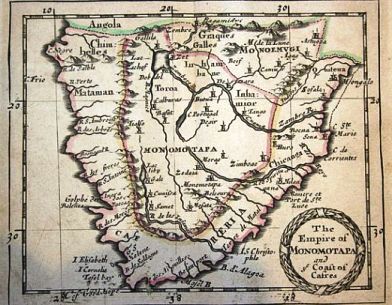 Monomatapa Kingdom, Southern Africa
Monomatapa Kingdom, Southern AfricaThe Shonas had settled in Southern Africa sometime during the 1st millennium, raising crops and cattle and becoming skilled miners and iron workers. Between the 12th and 14th Centuries they built Great Zimbabwe of which the surrounding stone wall, completed in 1400, still survives today. Various dynasties including King Mwana Mutapa continued to rule and expand in all directions including present day Botswana, Mozambique and South Africa.
Agriculture, gold and ivory established its wealth and basis for trade.
Eventually the power shifted north to Zvongombe where the kingdom of Mutapa was established around 1430. It was this culture that the Portuguese came into contact with in pre-colonialist days: (Non-Islam, Animist/Monotheism societies worshiping both a supreme deity and ancestral spirits).
At this time other Bantu realms existed in Central Africa in the present day countries of Zaire, Uganda, Zambia and Angola. In the Eastern African Highlands were the kingdoms of Buganda, Rwanda and Burundi and in Angola, there were the Kongo and Ndongo sovereignties.
Counterpoint to these politically and socially organized fiefdoms were tribes who saw no need for any form of structured settlement:
- the Kikuyu in Kenya
- the Maasai of Kenya and Tanganyika
- the Luo of Kenya and Uganda.
In the late 1400’s the Portuguese took to the seas and the grand Swahili civilization began to decline. In 1482, driven by the lure of trade in gold, the Portuguese built a settlement at Elmina in Ghana on the West Coast of Africa. 2 key inland trading centres were Savi (Hueda, Benin) and Ouidah in Dahomey. Africans maintained control of these towns.
Portuguese dominance in the 17th Century allowed a new dynasty of Arab rulers from Oman to establish trading routes with the interior, all the way to Lake Tanganyika.
In 1841 the Sultan of Oman decided to move the Omani capital to Zanzibar and Arab influence finally fell away when European colonization began.
Today, the remains of these ancient settlements exist all along the Coastal strip between Southern Somalia, Kenya and Northern Mozambique.
In the 4th century AD, ancient Ghana had been formed by the Soninke people who lived in the grasslands of the Western Sudan (where present Mali is today). They established an empire that dominated W Africa for 7 centuries. Peaking in the 11th C, the Kings became immensely rich and powerful, owing their wealth to the trade in gold.
By the late 11th Century, the Ghanains had been driven out by Moslem based invasions from the North and finally, after 150 years or so, were super-imposed by the Mandinka people of Mali.
The Kingdom of Mali became the great Empire of this area of Africa for 2 centuries - from 1250 to 1450. This was a very sophisticated society which embraced Islamic law, governance and economics and became part of a world, Islamic civilization. Their golden age was achieved under the rule of ‘Musa’.
The Kingdom expanded to include Mali, Guinea, Mauritania, Northern Mali and Senegal. Mosques and madras’s were built everywhere and their society became complex and layered, at the bottom of which were those who had lost the rights to be free men.
The supremacy of Mali was followed by that of the Songhoy people of Central Sudan. Their capital city was named Gao and it had already taken on Islam in the 11th Century. By the 14th C their power was further enhanced as they traded salt and cotton with gold from the forest country south of Gao (modern Ghana).
The Songhoy Empire of Gao included the city of Timbuktu, a town which to this day has mythical connotations such was its level of sophistication, power and wealth.
Culturally it holds massive significance being the retainer of 100’s of thousands of manuscripts written by scholars in the 1400-1500’s who recorded everything from astronomy to mathematics, to law, geography and history.
The study of the Koran was the core for the passages of learning and by the 16th century books had also become a commodity for trade. With Askia Mohammed’s rule from 1493 to 1528, the empire expanded even further and Timbuktu and Djenne became immensely rich trading epicenters.
In the last decade of the 1500’s, Gao and Timbuktu were looted by the Sultan of Morocco. Gold and slaves were sent across the desert and the town was occupied by the Niger Moors. Eventually they threw off all allegiance to Morocco and continued to rule with a fierce hand for 2 centuries, oppressing the indigenous tribes.
Eventually the Songhay empire was destroyed along with the culture of Timbuktu.
A number of independent kingdoms existed in this area during the same period:
- Kanem-Bornu tribal kingdom round Lake Chad
- Hausa people of central and western (present-day) Northern Niger
- Mossi tribe from the basin of upper Volta with a line of kings for reputedly over 100 years.
The first known forest kingdoms were formed in the early 11th C AD by the Yoruba and the Edo peoples of Western Nigeria. The Yoruba lived in their forest cities of which the major one was Ife and according to the Yoruba people, Ife was the heart of mankind.
In this early period of the Ogiso dynasty of Kings, foundations were laid for the Benin states which were to follow. The venerated rulers ruled with the assistance of elders, while a guild system of labour existed for the masses, ensuring high quality of workmanship from their artisans. The practice of highly skilled craftsmanship and artistry was integral to their society.
As early as the 1200’s bronze and terracotta sculptures were produced in this town and they remain highly revered objects, acclaimed for their realistic beauty, highly competent molding and proficient casting.
From the 12th to the 15th C Ife flourished as a major cosmopolitan city state in what is now modern Nigeria. The Ogiso kings were eventually outmoded by the Oba Dynasty round about 1170. The Yoruba people were united with the city of Oyo in the early 17th C to create an empire that included most of Nigeria and it remained in this powerful state for over a 100 years. They were mostly farmers but also spinners, dyers and metalworkers.
Oyo was a slave state and its king used slave labor on his vast farmlands.
In the South of Nigeria, Benin city was occupied by the Edo people.
Benin and Oyo had very strong affiliations with Ife, not only economically but also artistically and culturally, sharing technologies, customs and courtly traits that reflected their ongoing relationships with each other, both peaceful and otherwise. They had a strong inclination to be warlike, using horses in their army to strengthen their position in the region.
The Benin Empire reached its peak in the 16th C when the Oba kings established close relations with the Portuguese, trading in pepper, palm oil and dyed cotton goods. Benin City was walled for over 25kms and encompassed a thriving culture of merchants and artisans.
Metal sculptured plaques depict their might; their armory and their cavalry.
This empire started to decline after 1700 and two neighboring kingdoms rose to power, usurping the city-states of Benin and Oyo.
These were Dahomey and Ashanti.
The coastal kingdom of Abomey (now modern day Benin) became an independent sovereignty in 1625. Founded early in the 1600’s by the King of Allada, leader of the Fon people, it was known for its practice of sacrificing humans (mostly war captives) on a grand scale - to both honor the ancestors and, on the death of a King, to provide wives and attendants for the spirit world.
It was also known for the might of its female regiments (the Amazons) who remained close to their King protecting him against threat. They were the elite of the army.
Under the 12 kings who succeeded from 1625 to 1900, the kingdom established itself as the most formidable military and commercial dominion on the western coast of Africa.
The complex, fortified Royal Palaces of Abomey were established in 1625, protected with a mud wall, six guarded gates and thorn acacias. What remains today has become a Unesco cultural heritage site.
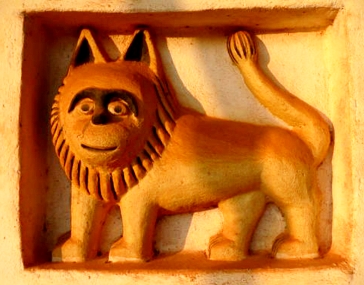 Lion, Royal Palace of Abomey
Lion, Royal Palace of AbomeyWest of Abomey was the Kingdom of Ashanti (Asanti). Groups of Akan people had formed forest states from the 1200’s onwards with an emphasis on community culture, music and dancing. Their primary unit was the village, governed by tribal elders.
By the 1400’s they had started to produce gold which in turn brought them into contact with the North and eventually European traders. They set up trading on the south Coast – this area was to become known as the Gold Coast.
The Ashanti eventually consolidated their kingdom by the end of the 17th Century; extending their power inland while looking for slaves and gold. This way they succeeded in uniting previously divided clans.
For 200 years their prosperity and power grew with Kumasi as their capital and central base. They had a very civilized culture embracing all races and societies and men were selected primarily for their abilities (including Europeans).
They were famous for their wood carvings and their gold artifacts.
Artisans from conquered territories worked with the gold that entered the Ashanti court via tribute or spoils of war. New styles of form and sculpture were introduced and officially adopted and used by the sovereign power.
The King’s ‘Golden Stool’ remains to this day the icon of the Asante kingdom, the primary symbol of their culture.
By the 1720’s Abomey became known as Dahomey under the rule and advancement of King Agaja’s empire. The King had access to the Europeans' gun trade and the State grew wealthy, prospering on the back of this trade as well as supplying slaves to them.
In the interior of the Congo region, (present day Northern Angola) existed the Kingdom of Kongo, ca 1390-1678. Its origins are uncertain but traditional accounts tell of King Lukeni lua Nimi establishing his fiefdom in 1390 at the foot of the mountain Mongo dia Kongo.
It was to become the most powerful and civilized state in Central Africa with an influential noble class and a highly centralized monarchy.
This inland area was known as Mbanza Kongo and it became King Lukeni's capital city (later known as Sao Salvador). Being surrounded by densely populated settlements they provided him with ample manpower for his army.
From here he integrated his conquered territories under his royal patrimony including much of Angola, the DRC (Zaire) and the ROC (Republic of Congo).
The economy was fueled by trade up and down the Central Congo river system in boats carrying ivory, ferrous metal goods, raffia textiles and pottery.
Slaves and rubber became the premium exports.
The first contact with Europeans came in 1480 and by 1483 the Portuguese had already established a diplomatic mission.
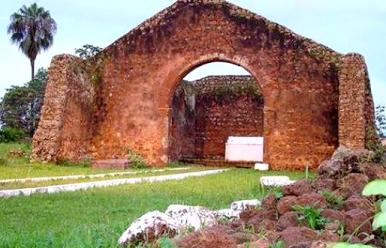 The Cathedral of Saint Saviour, Mbanza Kongo, 1549
The Cathedral of Saint Saviour, Mbanza Kongo, 1549At this time the kingdom was over 130 000 sq kilometers and half a million people lived there. Many of these were converted to Christianity and stone churches were erected including the Cathedral of Saint Saviour, built and consecrated during the years of 1549-1598.
Even while there was this burgeoning influence of Christianity, the slave trade continued to thrive; members of the Royal family led expeditions to the NE and SW of the Kongo Kingdom forcing submission of these areas to the King....sometimes with the assistance of the Portuguese.
They manage to secure regions which supplied products like iron, cloth and cattle, also monetary shells from Luanda and ultimately, by 1560 the valuable commodity of salt. At the same time they brought back slaves who were either sent to the coast to await transportation to Europe or set to work in farmlands that were attached to the king and his elders.
By the turn of the 17th Century, this district was experiencing some degree of stability. However, after 50 years or so, this peace was severely disrupted by rival lineages asserting their authority and their might. Adding to the mounting chaos the coastal province of Sonyo entered the fray causing civil war to ensue in the area. Sonyo had built up their own enslaved labour force off the back of the Portuguese's trade of slaves through their region.
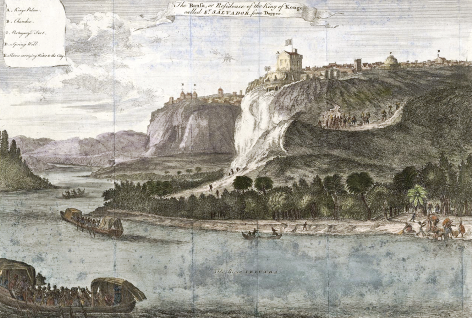 The Bansa, or residence of the King of Kongo called Sao Salvador in the 17th Century. Artist: Dapper 1639-1689
The Bansa, or residence of the King of Kongo called Sao Salvador in the 17th Century. Artist: Dapper 1639-1689Sao Salvador (Portuguese name for Mbanza) was under continual threat. In 1665 the armies of the Kingdom of Kongo underwent a crushing defeat from a Portuguese-led force from Angola and the city was sacked and abandoned in 1678.
Slave production dissipated and so too the social formations that allowed the King to be absolute. By the end of the century he was just a figurehead and the region was ruled by bickering nobles with territorial-based powers.
At this point in Africa's history we can be certain that, culturally, everything is changing on the continent and the advent of Christianity will bring a new set of values that will be developed alongside the indigenous traditions.
Slavery in Africa and the Treaty of Berlin (1885) regulating European colonization and trade in Africa are 2 periods of Africa's history that are so culturally significant in content that they are dealt with separately on this website.
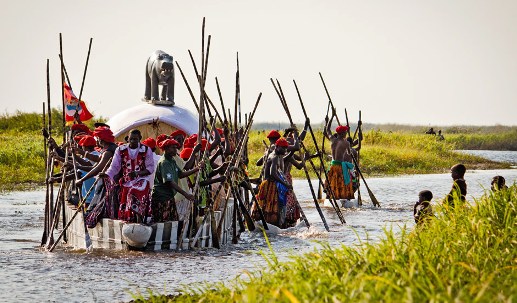
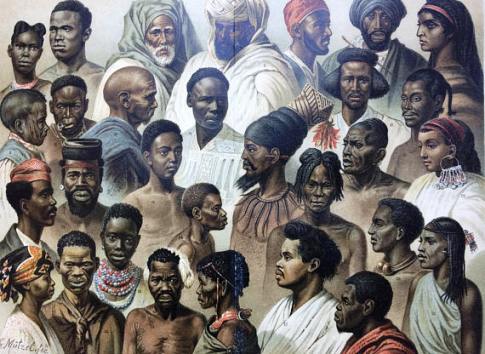
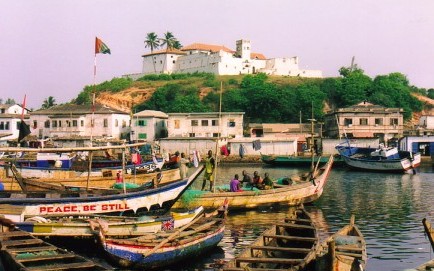
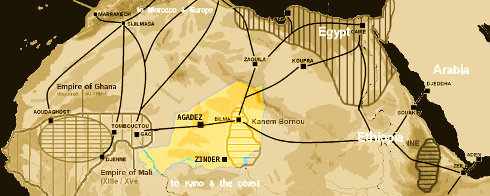
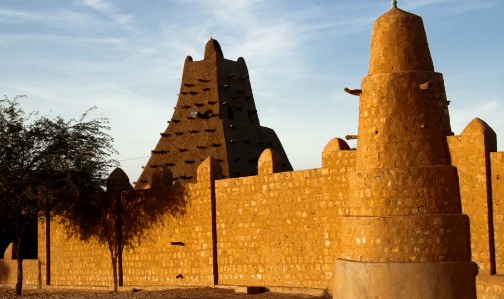
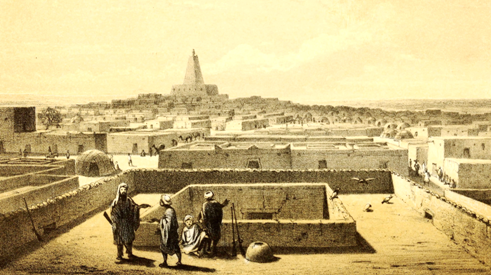
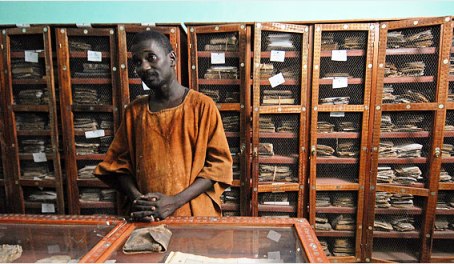
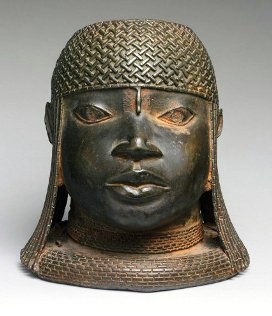
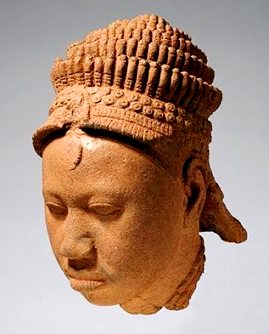
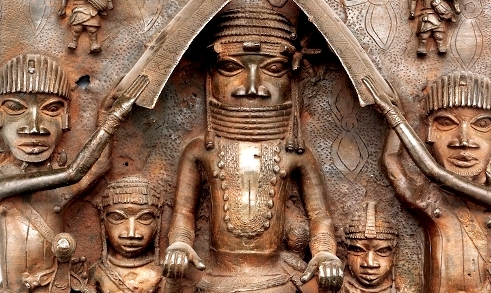
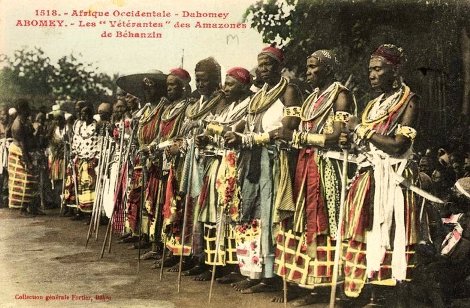
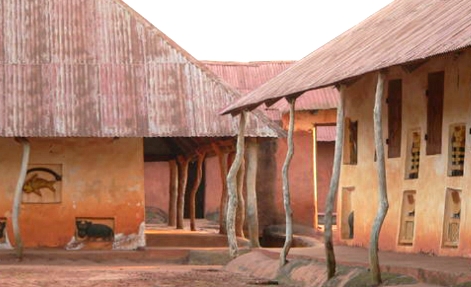
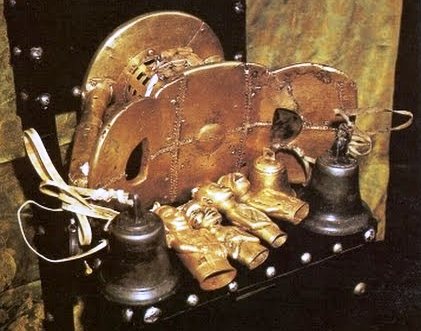
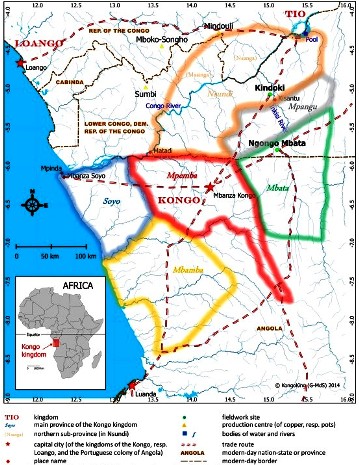

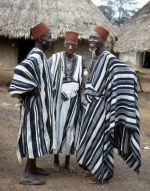


New! Comments
Have your say about what you just read! Leave me a comment in the box below.